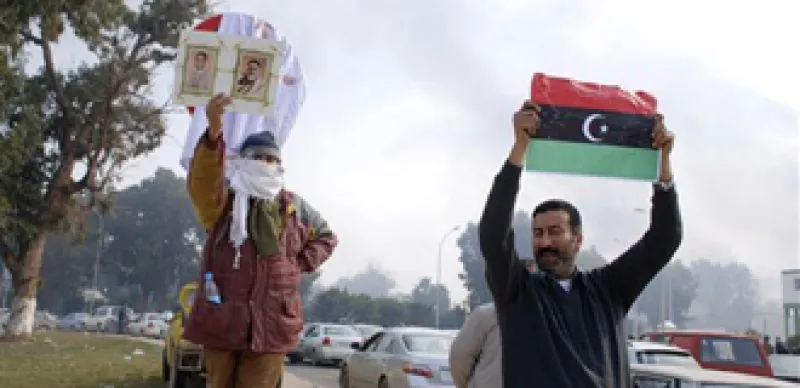The increasingly violent struggle for control of Libya on Wednesday sent the oil price in New York past the $100 mark for the first time in two years. And while the conflict unsettled financial markets around the world, it is likely to hit emerging nations the hardest.
Investors, who favored emerging markets for several years in the aftermath of the financial crisis, are redeploying capital into developed nations that are better equipped to withstand the pressure of rising energy costs.
“Investors are moving away, to some extent, from emerging market assets and moving into safer assets such as (investment grade) bonds,” says Eric Lascelles, chief economist for RBC Global Asset Management. “It’s a stagflationary shock, sending prices higher. That, in turn, will slow growth.”
The shift toward developed nations was well underway when the uprising in the Middle East and Africa began in January with protests that led to the ouster of Hosni Mubarak of Egypt. Investors were already positioning themselves to take advantage of a strengthening recovery in the U.S., and to protect themselves against rising interest rates and higher food prices that threaten to slow growth in China and other emerging markets.
It’s difficult, Lascelles says, to know exactly how much of the risk premium now attached to emerging market assets is geopolitical and how much is due to other factors. But there’s no question that the uprising has had a significant effect on the flow of capital.
Which economies are most vulnerable to the crisis in the Middle East and North Africa? The countries in those regions are literally in the line of fire, and have the greatest exposure to their own regional conflict. That shouldn’t be a surprise.
It’s the poorer countries of Asia, with exposure to rising food and energy costs, that are indirectly at the mercy of events in the Middle East. India, Indonesia and the Philippines are particularly vulnerable, according to Lascelles. China, a major producer of its own food, is somewhat less so.
Latin America, richer than those countries in Asia, is less vulnerable,. Eastern Europe, richer still, is a bit more insulated from the geopolitical crisis.
Investors are assessing the risk that the revolutions will spread. The unemployment rate is one key, although it doesn’t provide much more than a clue. Libya, with a unemployment rate of 30 percent, was a powder keg waiting to blow. Yemen, with an unemployment rate of 35 percent, may continue to devolve. That is the benchmark for disaster. The other economies of the Middle East, with the exception of Gaza, are below that level, but still high enough to be volatile.
Investors are most concerned about the outlook for Saudi Arabia and Iran, which have respective unemployment rates of 11 percent and 15 percent. That might not suggest that regime change is imminent. But the unemployment rate in Tunisia was 14 percent, and higher among youths. Many of those same problems exist in Iran, where complaints about inflation are common.
The odds that the upheaval will spread to other major oil producing countries and disrupt supply probably aren’t high, but they can’t be completely discounted either. So it is likely that capital will continue to flow out of emerging markets as investors lower their exposure to risk.






